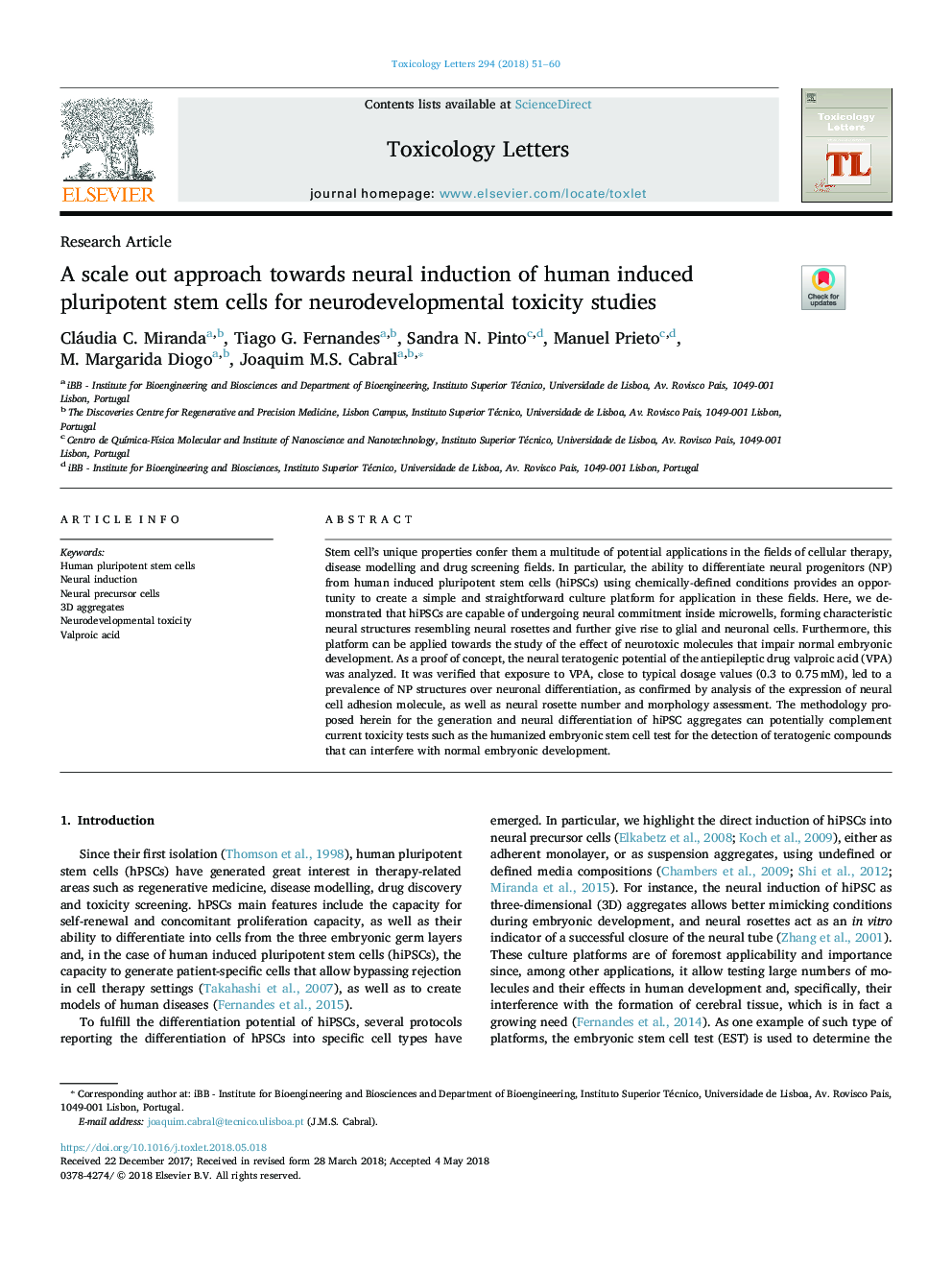| Article ID | Journal | Published Year | Pages | File Type |
|---|---|---|---|---|
| 8553110 | Toxicology Letters | 2018 | 10 Pages |
Abstract
Stem cell's unique properties confer them a multitude of potential applications in the fields of cellular therapy, disease modelling and drug screening fields. In particular, the ability to differentiate neural progenitors (NP) from human induced pluripotent stem cells (hiPSCs) using chemically-defined conditions provides an opportunity to create a simple and straightforward culture platform for application in these fields. Here, we demonstrated that hiPSCs are capable of undergoing neural commitment inside microwells, forming characteristic neural structures resembling neural rosettes and further give rise to glial and neuronal cells. Furthermore, this platform can be applied towards the study of the effect of neurotoxic molecules that impair normal embryonic development. As a proof of concept, the neural teratogenic potential of the antiepileptic drug valproic acid (VPA) was analyzed. It was verified that exposure to VPA, close to typical dosage values (0.3 to 0.75â¯mM), led to a prevalence of NP structures over neuronal differentiation, as confirmed by analysis of the expression of neural cell adhesion molecule, as well as neural rosette number and morphology assessment. The methodology proposed herein for the generation and neural differentiation of hiPSC aggregates can potentially complement current toxicity tests such as the humanized embryonic stem cell test for the detection of teratogenic compounds that can interfere with normal embryonic development.
Keywords
Related Topics
Life Sciences
Environmental Science
Health, Toxicology and Mutagenesis
Authors
Cláudia C. Miranda, Tiago G. Fernandes, Sandra N. Pinto, Manuel Prieto, M. Margarida Diogo, Joaquim M.S. Cabral,
